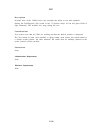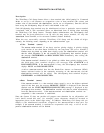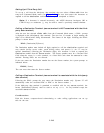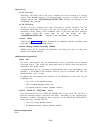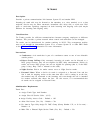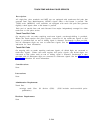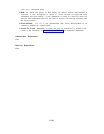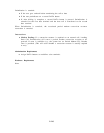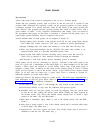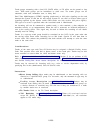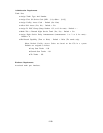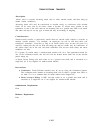
Description
Allows a user to transfer any call to another voice terminal.
A user can transfer calls either with or without announcement. A multiline terminal user
presses TRANSFER; the party is automatically placed on Special Hold (indicated by a
broken-flutter on the status LED of the call appearance button) and may receive Music-On-
Hold, if available. The system will automatically select an idle System Access button. The
user may dial the desired number or select another facility button and dial the call. The
user then can do one of two things: (1) hang up or (2) wait until the called party answers,
announce the call, and then hang up. The held call receives music if provided (and so
administered) until the transferring station hangs up, after which it receives ringback until
the transferred-to station answers.
Unanswered transfers will receive the coverage
treatment of the transferred-to station.
A Personal Line transferred by a multiline voice terminal user will indicate the Special Hold
status at the transferring voice terminal until answered, and may be reentered if the call is
not answered. Reentering the call will automatically terminate the transfer attempt.
Single-line voice terminal users may transfer calls by flashing the switchhook, which puts
the caller on hold, listening for Recall Dial tone, dialing the second party, and going on-hook
either immediately or after announcing the call to the second party. A call may also be
transferred by setting up a conference and then hanging up.
Considerations
Transfer provides a convenient way to redirect a call to another voice terminal. Attendant
assistance is not required and the caller does not have to redial. While it is possible to
transfer a call without announcing it, it is recommended that call transfers always be
announced.
Interactions
● Account Code Entry: A user may transfer a call to another user, then, instead of
hanging up, enter an account code.
Subsequent account code entries will be ignored.
● Attendant Console: In most cases, the attendant should not use this feature to
extend incoming calls, but should use the Start button or Selector Console instead.
The exception to this rule occurs if a trunk-to-trunk transfer is desired (see below).
●
Call Coverage: Coverage treatment of the transferred-to station is provided to
transferred calls.
When a covering station transfers a covered call to another
station, the call will no longer appear at the covering station but will still appear at
the covered station. Note that if you attempt to transfer a call to a station that you
provide call coverage for, and that station does not answer, call coverage might not
be invoked. (This is one of the reasons why announced transfer is recommended. )
●
Call Pickup: A transferred call may be answered via Call Pickup.
● Calling Restrictions: A non-restricted user (typically the attendant) can transfer a
CO trunk to an outward restricted or toll restricted station, giving the station
outward service.
The toll restriction class of the transferring station will apply for
2-245




